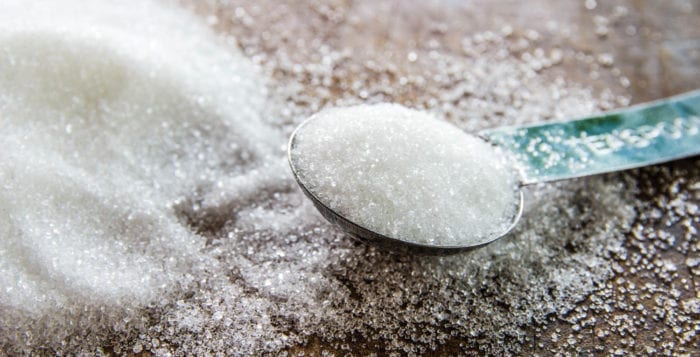By Chris Zenyuh
Throughout our evolution, fruit stood as the primary source of sugars in our diet. That we evolved to desire sweetness, I contend, was not for energy but for the vitamins, minerals, fiber and antioxidants that come with the fruit. The fiber helps slow sugar absorption and reduce its negative metabolic potential, and the vitamins compensate.
The limitations of seasonal fruit accessibility made getting too much of these sugars infrequent, at most. Access to purified cane sugar was limited as well, due its tropical origins. The cost of growing and shipping cane sugar slowed its consumption, certainly for those of lesser means. Still, the demand for sugar steadily increased, a fact that the English monarchy used to fund its war chest.
William Duffy (in his book “Sugar Blues”) has suggested that the sugar machine was largely behind English colonization and enslavement through the 1800s. Duffy suggests that denying sugar’s responsibility for metabolic dysfunction dates back to Dr. Thomas Willis, private physician to King Charles II. Willis both discovered and named diabetes mellitus. Smart enough to recognize the illness and its sugar-related cause, Willis was also smart enough to name it after “honey” instead of sugar, perhaps to keep his job and his head!
Enjoying rations of sugar and rum, tens of thousands of the British sailors who guarded the sugar routes fell ill and died from scurvy. School children are taught that scurvy is a vitamin C deficiency, as it was discovered that the symptoms could be reversed with the addition of citrus to the rations. Sadly, this well-known story promotes the denial of the cause: too much sugar (and rum). Our food, medical and supplement industries continue to promote the use of fortification and vitamin supplements to “protect” against illnesses like scurvy, rather than incur financial loses that would result from curtailed consumption of sugars.
The spiraling decline of our general health gained momentum in 1973, when then Secretary of Agriculture Earl Butz instituted a 180 degree change in the farm subsidy program. Prior to 1973, farmers were directed by the government to curtail production to keep the supply and demand for corn in check. Sometimes, the farmers were instructed not to grow corn but were compensated for lost income. The restricted supplies kept corn prices high, making it too expensive to use high fructose corn syrup as a sweetener. Sugar cane, expensive due to its tropical origins, found itself in a limited range of food products.
The new program launched in 1973 rewarded corn farmers for producing as much corn as possible. Soon, the science to produce more corn, then the science to engineer additional uses for the extra corn became big businesses. High fructose corn syrup and cattle feed businesses were early beneficiaries of the new system. The ranchers and corn refiners lobbied to pay below cost for corn. Corn farmers would lose money, but, the new farm bills enabled the farmers to make up their losses (and more) by receiving the subsidies, funded by tax dollars. That made it cheaper to feed cattle corn than to feed them grass and cheaper to sweeten food with high fructose corn syrup (HFCS) than with sugar.
Americans were now able to purchase foods sweetened with HFCS and corn-fed meat at much cheaper prices than ever before. The cost, of course, does not include the medical expenses that may be incurred from chronic exposure to glucose and fructose, though.
The Sugar Association, still burdened with the expense of sugar cane’s tropical origins, has expanded its use of sugar beets to become price competitive in the caloric sweetener market. Farmed and processed in the continental United States, sugar beets are used to sweeten processed foods almost as cheaply as HFCS. If the ingredient label doesn’t specify cane sugar, it may very well be beet sugar. Of course, it is still sucrose.
Now you know why caloric sweeteners are omnipresent in our food system and how “food” can be available so cheap. You might want to reconsider the amount that you consume of what nature so frugally offers. Regardless of its source or history, it is metabolically the same!
Chris Zenyuh is a science teacher at Harborfields High School and has been teaching for
30 years.






